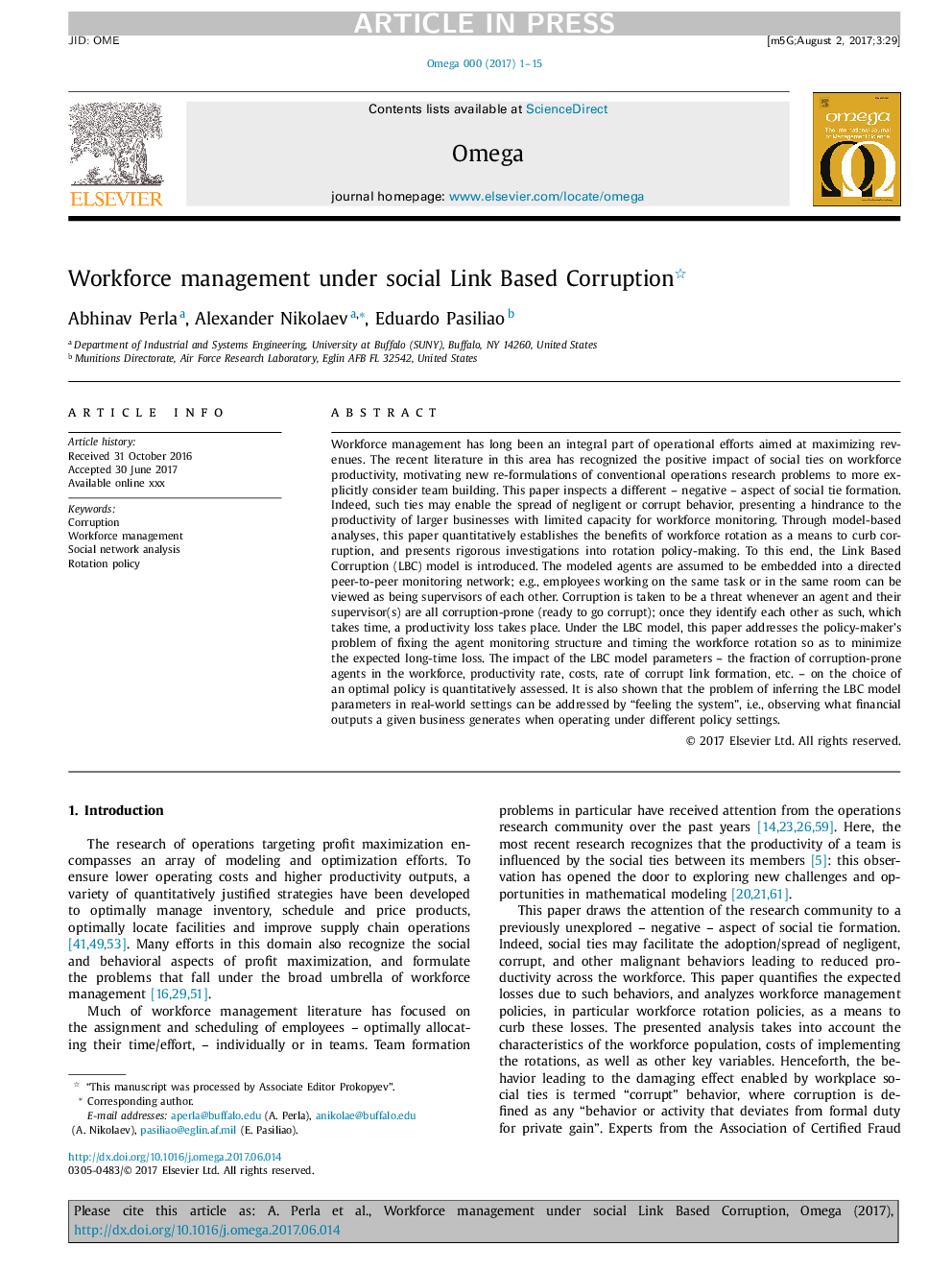| Article ID | Journal | Published Year | Pages | File Type |
|---|---|---|---|---|
| 7436658 | Omega | 2018 | 15 Pages |
Abstract
Workforce management has long been an integral part of operational efforts aimed at maximizing revenues. The recent literature in this area has recognized the positive impact of social ties on workforce productivity, motivating new re-formulations of conventional operations research problems to more explicitly consider team building. This paper inspects a different - negative - aspect of social tie formation. Indeed, such ties may enable the spread of negligent or corrupt behavior, presenting a hindrance to the productivity of larger businesses with limited capacity for workforce monitoring. Through model-based analyses, this paper quantitatively establishes the benefits of workforce rotation as a means to curb corruption, and presents rigorous investigations into rotation policy-making. To this end, the Link Based Corruption (LBC) model is introduced. The modeled agents are assumed to be embedded into a directed peer-to-peer monitoring network; e.g., employees working on the same task or in the same room can be viewed as being supervisors of each other. Corruption is taken to be a threat whenever an agent and their supervisor(s) are all corruption-prone (ready to go corrupt); once they identify each other as such, which takes time, a productivity loss takes place. Under the LBC model, this paper addresses the policy-maker's problem of fixing the agent monitoring structure and timing the workforce rotation so as to minimize the expected long-time loss. The impact of the LBC model parameters - the fraction of corruption-prone agents in the workforce, productivity rate, costs, rate of corrupt link formation, etc. - on the choice of an optimal policy is quantitatively assessed. It is also shown that the problem of inferring the LBC model parameters in real-world settings can be addressed by “feeling the system”, i.e., observing what financial outputs a given business generates when operating under different policy settings.
Related Topics
Social Sciences and Humanities
Business, Management and Accounting
Strategy and Management
Authors
Abhinav Perla, Alexander Nikolaev, Eduardo Pasiliao,
